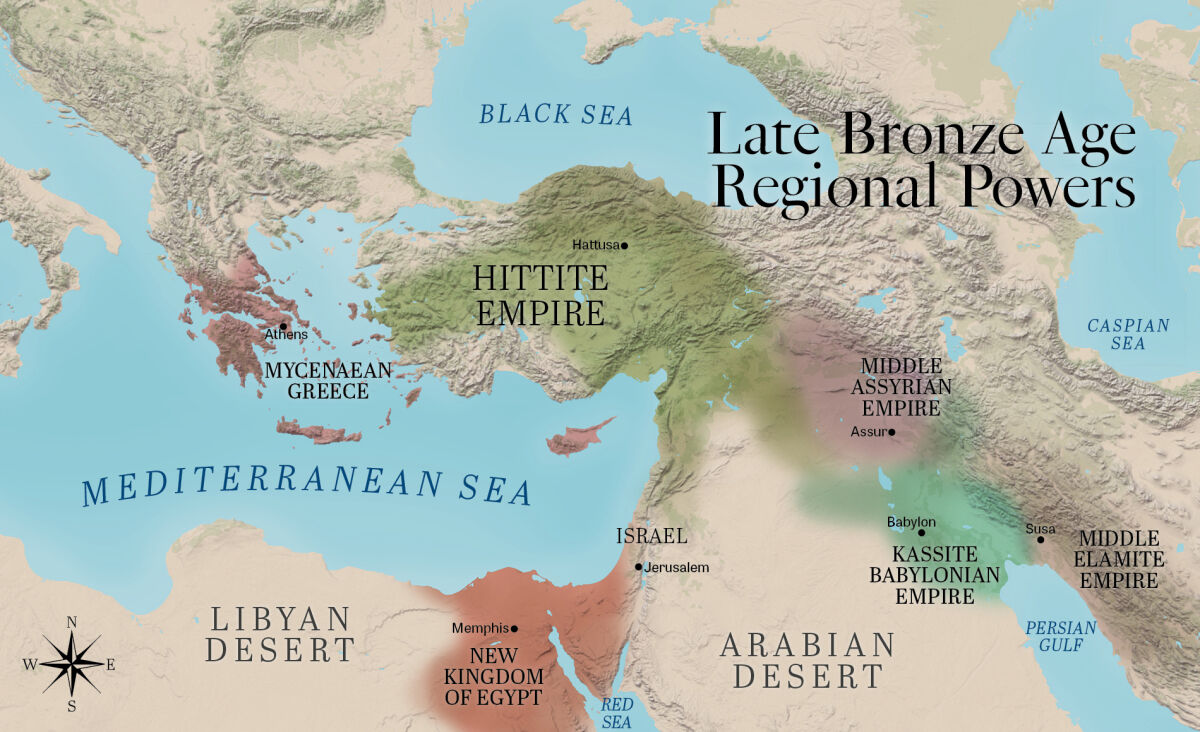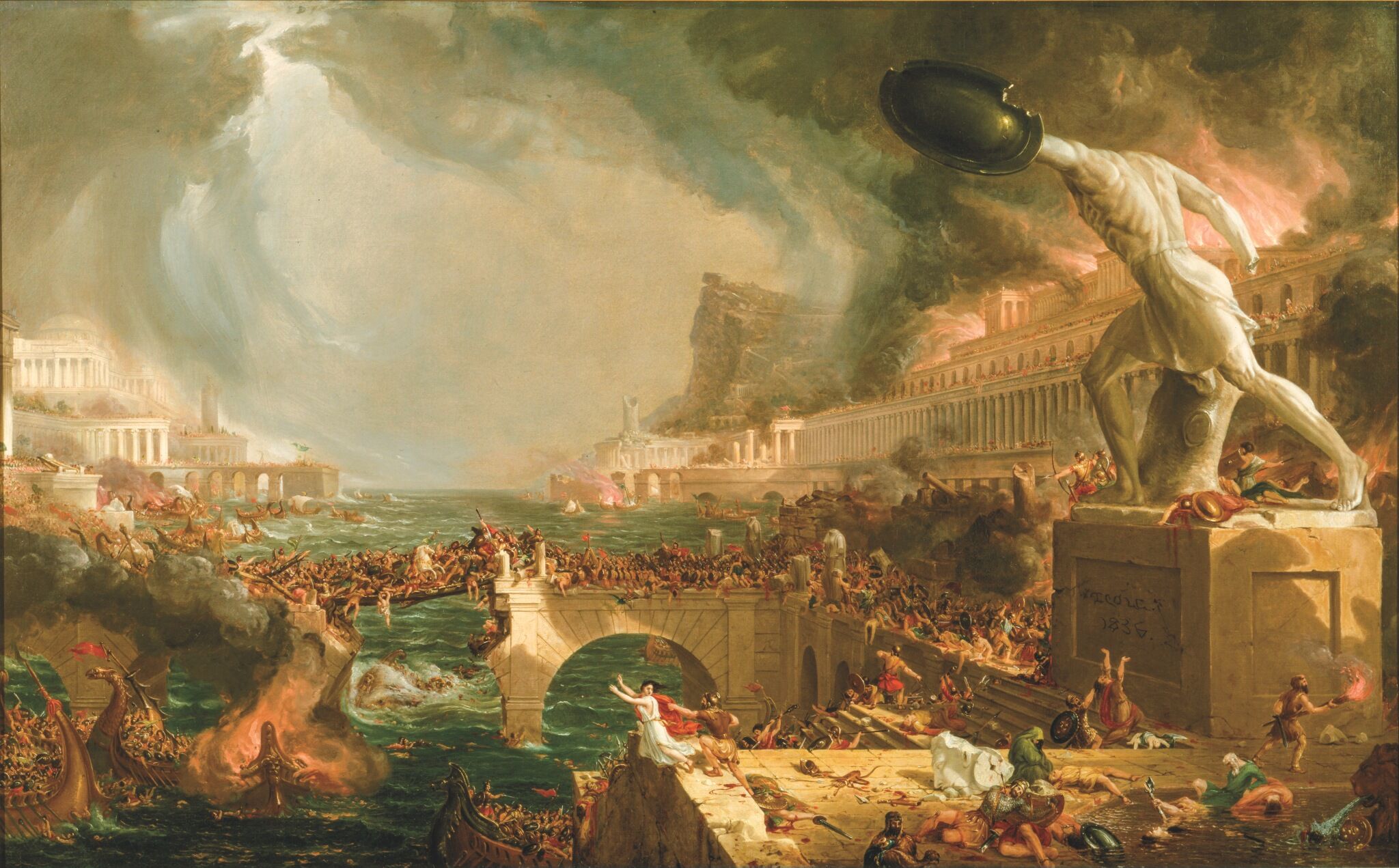When King David arrived on the scene in the late 11th century b.c.e., Israel was in a pathetic condition. Underdeveloped and disunited, the nation was more a loose alliance of tribes than an integrated people with strong borders and an established national identity led by a capable central government.
However, the fledging nation did have some conditions in its favor. One of the most important was the geopolitical dynamic of the larger region. For a feeble nation aspiring to power, the state of its neighborhood can be decisive. Competition and war stunt growth. When thousands of young men are on the battlefield, farming, industry and the economy suffer. Peace, by contrast, is conducive to growth.
When David first became king, Israel had local rivals, including the Philistines. Remarkably though, there was no competition or threat from any of the major civilizations. By the time Solomon became king, even the local threats had been subdued, and the entire region had peace.
Even today, the late Bronze Age collapse of virtually all of the major powers in the Near East befuddles historians. Experts don’t know the precise cause of the region-wide slump, which began roughly between 1200 and 1150 b.c.e. and continued for 100 to 150 years. Was it famine? War? Climate change? Or perhaps a combination of these? With the exception of some local powers, all of the major civilizations—including Egypt, Babylon and Assyria—languished at exactly the same time.
This “collapse” is documented in the archaeology and ancient texts of these states, as well as the biblical text. 1 Kings 5:4, for example, records the calm that prevailed across the region during the reign of Solomon: “For he had dominion over all the region on this side the River, from Tiphsah even to Gaza, over all the kings on this side the River; and he had peace on all sides round about him.”
It is remarkable and noteworthy that these nations suffered collapse at exactly the same time.
Failing Empires
First, Egypt was an overwhelming regional power for most of the second millennium b.c.e. But at exactly the time Israel was emerging, Egypt largely lost its footing and never again rose to the same heights. Egypt’s New Kingdom Period—when it reached the peak of historical power—waned and ended around the mid-11th century b.c.e. At this time, Egypt entered the Third Intermediate Period. This period, during which Egypt was ruled by non-native pharaohs, is sometimes referred to as “chaotic” and one of “decline,” “instability” and “division.” “At the end of the New Kingdom, Egypt was divided,” summarizes Encyclopedia Britannica. “The north was inherited by the Tanite 21st dynasty … [and] much of the southern Nile River Valley came under the control of the Theban priests ….
“After the demise of Egypt’s Asian empire, the kingdom of Israel eventually developed under the kings David and Solomon. During David’s reign, Philistia served as a buffer between Egypt and Israel; but after David’s death the next to the last king of the 21st dynasty, Siamon, invaded Philistia and captured Gezer. If Egypt had any intention of attacking Israel, Solomon’s power forestalled Siamon, who presented Gezer to Israel as a dowry in the diplomatic marriage of his daughter to Solomon. This is indicative of the reversal of Egypt’s status in foreign affairs since the time of Amenhotep iii, who had written the Babylonian king, ‘From of old, a daughter of the king of Egypt has not been given to anyone’” (“The Third Intermediate Period”).
To the north and west of Israel, the Mycenaean Greek civilization also collapsed during the mid-late 11th century b.c.e., plunged into what is commonly called the “Greek Dark Age.” “A society that once ruled the Late Bronze Age of Greece, they promptly vanished from history and slowly faded into legend,” wrote author Van Bryan. “We may never know what truly killed the Mycenaean civilization so abruptly and with such finality. Their sudden disappearance would plunge Greece into a dark age for hundreds of years” (“The Rise, the Fall, and the Mystery of the Mycenaeans”).
East of Greece, the powerful Hittite empire (which controlled much of Turkey) collapsed and disappeared entirely. In its place, mini-kingdoms known as the “Syro-Hittite states” arose, each a limited, minor power. “[D]rought was just one of the numerous problems that the Hittites and others were facing at that time,” wrote Prof. Eric Cline. “There was a cacophony of catastrophes that led not only to the collapse of the Hittite empire but also to the collapse of other powers as well. They include climate change, which led in turn to drought, famine and migration; earthquakes; invasions and internal rebellions; systems collapse; and quite possibly disease as well. All probably contributed to the ‘perfect storm’ that brought this age to an end, especially if they happened in rapid succession one after the other, leading to domino and multiplier effects and a catastrophic failure of the entire networked system” (“Tree Rings, Drought, and the Collapse of the Hittite Empire”).
Farther east, the story was the same. The powerful Middle Assyrian Empire was drawing to a close. The mid-11th to late 10th century have been described as a catastrophic period of decline for Assyria, due to some kind of mysterious, otherwise-unknown major crisis. (Interestingly, it is only at the very end of this period—the late 10th century b.c.e.—that the Neo-Assyrian Empire begins, catapulting Assyria to unmatched power as one of the greatest empires the world had ever seen.) The same is true of the Babylonians. Within a roughly 100-year period from the late 11th through the 10th century, Babylon languished in a so-called Period of Chaos sometimes described as “weak” and “anarchic.”
J. A. Brinkman describes this history of Assyria and Babylonia in his book A Political History of Post-Kassite Babylonia in the vague context of a rise in Levantine powers: “The Arameans and their semi-nomadic confreres were to prove a major factor in the political decline of Babylonia and Assyria over the next two centuries,” with “seeds of chaos implanted by the surge of Arameans.”
“Both Babylonia and Assyria were soon on the decline [at the end of the second millennium], militarily speaking,” wrote Brinkman; “and for approximately the next century, they were occupied principally with keeping rampaging semi-nomads out of their ever shrinking territories” (ibid).
Further east, the Elamite empire—at the height of its power in the 12th century—ended abruptly around 1100, following the death of Emperor Hutelutuš-Inšušinak. It entered a 300-year period of “obscurity,” when “Elamite power faded from the political scene for a long time,” writes Encyclopædia Iranica. “No Elamite document from this … phase of 2½ centuries provides any historical information” (“The History of Elam”).
The infant kingdom of Israel, certainly at the beginning of David’s rule (circa 1011), wasn’t entirely without competition or threat. The Philistines, situated southwest of Jerusalem on the coastal plain, were a menace, as were some of the powers in the Transjordan. But compared to Egypt, Assyria and Babylon, these local powers were relatively insignificant and certainly surmountable.

History Abhors a Vacuum
In his landmark 2003 book, On the Reliability of the Old Testament, Prof. Kenneth A. Kitchen explores the timing of Israel’s rise. “A fact that is almost totally unknown to nearly all commentators on 2 Samuel 8 to 1 Kings 11 is that the scale and nature of the wider realm of David and Solomon … belong to a specific period of history, namely, circa 1200–900—neither earlier nor later,” he writes.
In other words, the dynamics of the larger region presented Israel with an opportunity. “The limits are set by the demise of the great Egyptian and Hittite Late Bronze Age empires within 1200/1180, just before our period (introducing it), and by the rise and initial expansion of the Neo-Assyrian Empire within circa 870–850 and onward, just following our period,” writes Kitchen.
It is said that nature abhors a vacuum. So too history: It abhors vacuums of power. Is the period from the late 11th to 10th century best characterized by the timid growth of a fledgling Levantine kingdom within an overall void of wider regional powers? Or could the biblical account of a superb Israelite empire—which happens to slot perfectly into this precise time frame and geopolitical situation—be the explanation for this power vacuum?
Could the presence of an Israelite empire explain why, when the Greeks suddenly emerged from their “Dark Ages,” they were using an entirely new alphabet, one with fascinating similarities to the one used by Israel? Could this explain why it was precisely at the time of the collapse of Israel’s united monarchy that Assyria-Babylonia immediately reemerged as the dominant power of the Near East?
This explanation is consistent with the biblical text, which describes Israel’s ascendancy over its neighbors and even its power projection deep into Mesopotamia. 1 Chronicles 18-19 summarize the growth and consolidation of Israel’s “empire.” These chapters describe David’s conquest of the Philistines (1 Chronicles 18:1), of Moab (verse 2), the Syrians (verses 3-10), and of the Edomites, Ammonites and Amalekites (verse 11). 1 Chronicles 19:6 even describes the period of chaos in Mesopotamia (fitting well with the description above of the Assyrian and Babylonian powers being overrun by “Arameans” and “semi-nomadic peoples”).
This further raises the question: Did 11th-to-10th-century Israel become a comparatively powerful entity only because of the collapse of surrounding, powerful kingdoms? Or did Israel’s rise contribute to the otherwise “mysterious” collapse of other surrounding powers?
What we know is that exactly within the period during which the Bible describes a fantastic Davidic and Solomonic kingdom, we see the complete collapse of all other major regional powers—including those specifically described as being conquered by Israel in the biblical account—followed by the sudden rise to power by enemy states in the years following the collapse of Israel’s united monarchy.

